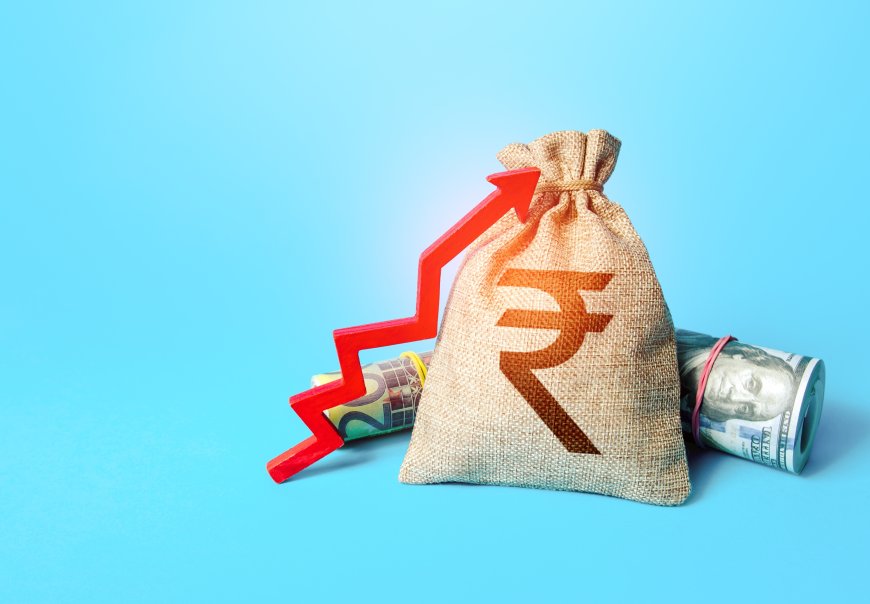What the Indian Economy Will Look Like in 2026—and What it Means for Indian SMEs
India’s economy in 2026 is set for strong growth driven by digitalization, exports, and infrastructure. See how these shifts will shape opportunities for Indian SMEs.

India is moving towards the limelight of the world. An avid topic to widespread attention and discussion, India's lightning speed in growth of gross domestic product from 2000 was the highest among the ten major economies. Nevertheless, what is it for the common man? Besides, how does this gradual increase in India's vibrant sector - the Small and Medium Enterprises (SMEs) - contribute to the rub-a-dub growth?
If you are a small business owner, the owner of a factory, or a service provider in India, then the year 2026 is not too far off. A lot is waiting, and new difficulties come with it. We will look into the Indian economy's future and then discuss how your business can be ready to ride the wave through preparation.

The Big Picture: India’s Economic Trajectory to 2026
At first, we must focus on the figures because they tell a tale of vast growth that is also stable and unambiguous.
Hefty global institutions like and IMF are going to show a very good and solid India growth of GDP for the fiscal year FY26 between 6.5%-6.8% (IMF, RBI). Additionally, Goldman Sachs has upgraded its prediction on the Indian stock market, which is a sign of strong global trust (Goldman Sachs, 2025).
Why the confidence? It comes down to a few key areas:
1. Domestic Demand is King: India’s growth, unlike the majority of economies, is primarily driven by its huge population. People are opening their wallets more as inflation decreases and consumer confidence goes up. This strong consumption is the foundation for the Indian economy's future outlook (Finance Ministry, 2025).
2. Structural Reforms: The government reforms of the day, such as the benevolent GST (Goods and Services Tax), have been instrumental in making the business landscape more user-friendly. Besides, the government is pouring substantial amounts into infrastructure, which is the necessary basis for economic growth.
3. Financial Stability: The finance sector of India is becoming more robust and open to all. The economy is cushioned by this stability, which is necessary for the economy to grow, and thus a constant flow of money is needed (World Bank, 2025).
India is already positioned by this unbroken growth to reach a $5 trillion economy very soon and to be the third-largest in the world eventually. The narrative of the Indian economy’s past, present, and future has been a story of constant and uninterrupted upward movement.
Sectors That Will Lead the Charge
The high growth won't be spread evenly. Certain sectors will see an acceleration, creating immense opportunities for SMEs who supply them or support them.
1. Manufacturing and Technology: The 'Make in India' Leap
Manufacturing is moving from assembly to creating an entire ecosystem. Electronics and semiconductors are the next big frontier.
Electronics Ecosystem: The government’s Production Linked Incentive (PLI) scheme, which has had the effect of attracting global behemoths (ETManufacturing, 2025), is certainly an indicator for a vast number of local small and medium-sized suppliers, who will be able to provide components, packaging, and various services. If your SME is making plastic parts, precision tools, or offering technical assembly services, you are on a winning path.
Automotive Shift: The switch from internal combustion engine (ICE) vehicles to electric vehicles (EVs) is reshaping the supply chain, thus offering an opportunity for smaller companies to make batteries, chargers, as well as new-age electronics controlling vehicles. Thus, the shift enables shocking technologies.
2. Financials and Consumption: Serving the New Middle Class
According to HSBC (2025), banks and consumer goods companies are likely to lead the way in the recovery of corporate earnings.
Retail and E-commerce: With a growing number of people joining the middle class, there is a huge demand for home appliances, fashion, and personal goods, particularly in Tier 2 and Tier 3 cities (EY, 2025). This is the point where SMEs' cooperation with large brands in the areas of warehousing, logistics, local distribution, and digital marketing can be very beneficial.
Banking Access: The dramatic increase in bank profitability and a corresponding improvement in asset quality may be indicative of a more credit-friendly environment. As a result, the process of small businesses borrowing money for the purpose of expansion should become somewhat less difficult.
The SME Game Plan: Riding the Growth Wave
So, how can Indian SMEs—the backbone of our economy, contributing nearly 30% of the country’s GDP and almost half of all exports—turn this positive outlook into profit?
The path for the Indian economy in the future is clear: Formalization, Specialization, and Digitalization.
1. Formalize to Scale Up
Many SMEs still operate informally. However, the government is incentivizing formalization.
Credit Access: Formal registration (like Udyam) and clear accounting are the keys to accessing formal bank credit. The government has increased credit guarantee limits for micro and small enterprises, meaning more collateral-free loans are available for businesses that are registered and compliant (PIB, 2025). Use this to your advantage to invest in better machinery or staff.
Case Example: A small textiles manufacturer in Surat, by properly registering for GST and maintaining digital ledgers, moved from informal moneylenders to getting a large working capital loan from a PSU bank. This allowed them to bid for larger contracts with international buyers.
2. Embrace the Tech Shift
The shift to technology has become a necessity and an option for survival.
Digital Lending: Although a lot of SMEs are using digital payments, the number of those that are availing digital lending and advanced operational tools is still very limited (Deloitte, 2025). The needs of the business may include simple inventory management software, online invoicing tools, and digital platforms for connecting with business buyers.
Skill Development: The manufacturing sector is rapidly moving towards advanced technology, particularly in electronics and semiconductors; consequently, the personnel need to learn new technology skills. Government-sponsored skill development schemes, along with collaboration with the private sector, are the major requirements for an SME to be a competitive supplier to the large-scale factories under the Production Linked Incentive (PLI) scheme.
3. Overcome the Old Challenges
SMEs will have to overcome access to long-term finance and intense competition even after they grow (SIDBI, 2024).
Diversify: Even if you have one or two very big clients, don’t rely on them entirely. Domestic consumption is increasing; therefore, the market of the emerging Tier 2/3 cities should also be looked at, not just the large metros.
Focus on Niche: If you can't compete with giants on volume, compete on quality and specialization. Look for those "idiosyncratic mid-cap stories"—the small, niche companies with unique market positions that attract fresh investor attention (HSBC, 2025). Can you be the best supplier for just one tiny, crucial component?

Conclusion: Preparing for the Next Growth Leap
The future of the Indian economy is one of constant growth. India will be a major global growth center by 2026, relying not only on robust domestic demand and high consumption but also on a deliberate move to sophisticated manufacturing.
For Indian SMEs, this is a golden period. It’s a time to be bold, to shed old inefficiencies, and to formally integrate into the mainstream economy. By focusing on digitalization, utilizing available credit, and positioning yourselves as specialized, high-quality suppliers to the booming sectors of electronics, consumption, and finance, your small business can make the jump from local hero to national powerhouse.
It’s time to stop just working in your business and start working on your business's alignment with India’s massive growth story.
What's Your Reaction?
 Like
0
Like
0
 Dislike
0
Dislike
0
 Love
0
Love
0
 Funny
0
Funny
0
 Angry
0
Angry
0
 Sad
0
Sad
0
 Wow
0
Wow
0























































































































































































